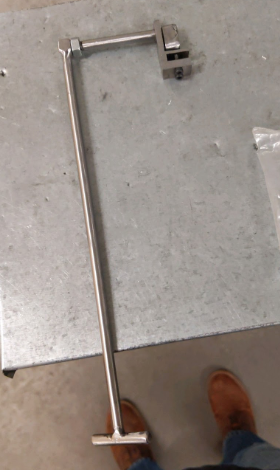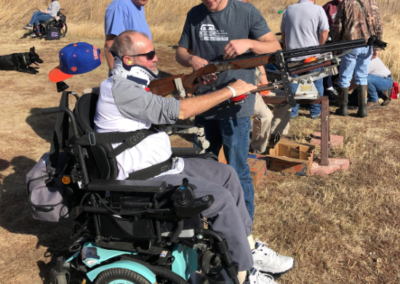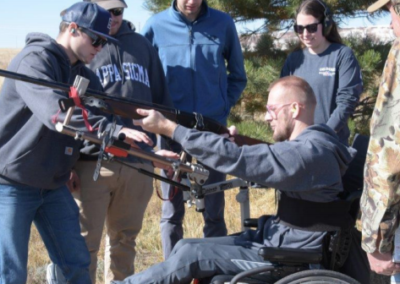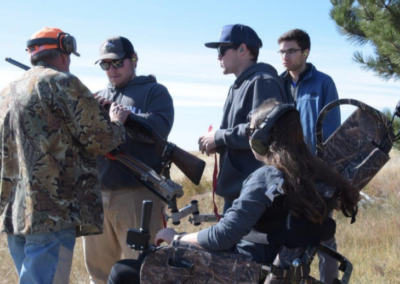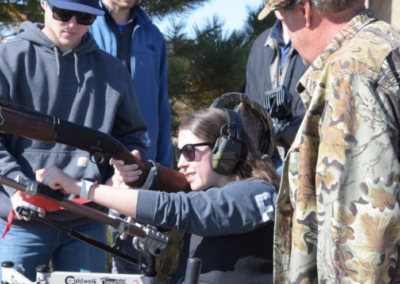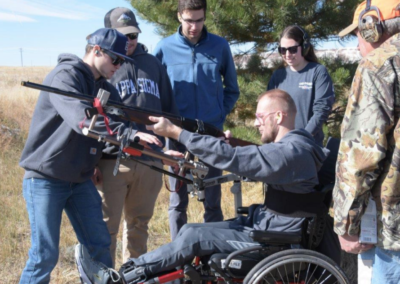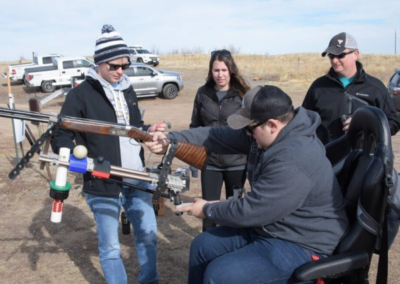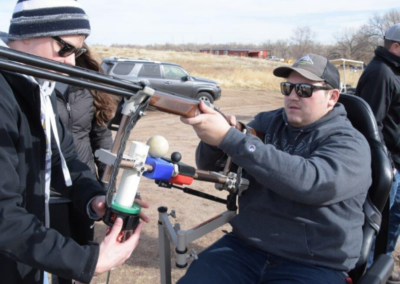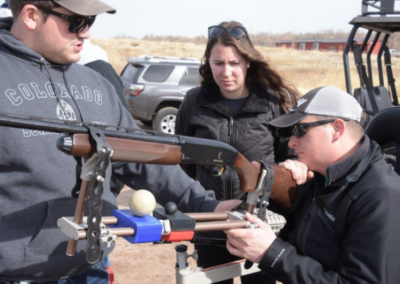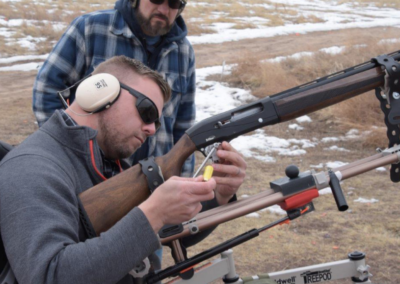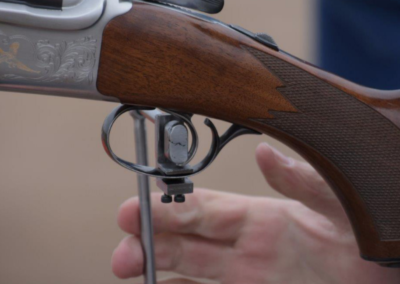Wheelchair Shooting Apparatus
Overview
The wheelchair shooting apparatus is a tool to help disabled contestants shoot a shotgun. The clientele that will be using our apparatus normally suffer from TBI or traumatic brain injury. Our goals are to provide a functional shooting apparatus for use by those with limited bodily function. The apparatus will be used for shooting skeet, so it must be able to secure a shotgun and move in a path suitable for shooting clays. It is an expressed goal to have the motion feel as natural as possible while remaining assistive. This is mainly achieved with the assistance of a good base along with a shock system that supports the weight of the gun and carries the smooth motion.
The apparatus will be made to be both stand alone and mountable to the motorized wheelchair, the trackchair. The apparatus will need to be somewhat compact and lightweight for ease of transport. It needs to be relatively simple, so as to be reliable under hard use, and have parts that can be easily replaced. That being noted, the use of custom parts should be limited as much as is possible, with off the shelf parts being preferred for ease of replication. The main parts that were custom made on the design were the pivot points on the Caldwell base and the shock mounts to support the weight of the gun. In addition, a trigger mechanism for those with the ability to either push or pull (though who cannot physically pull the trigger) will be made (custom) so that the end user may have as much autonomy in skeet shooting as possible.
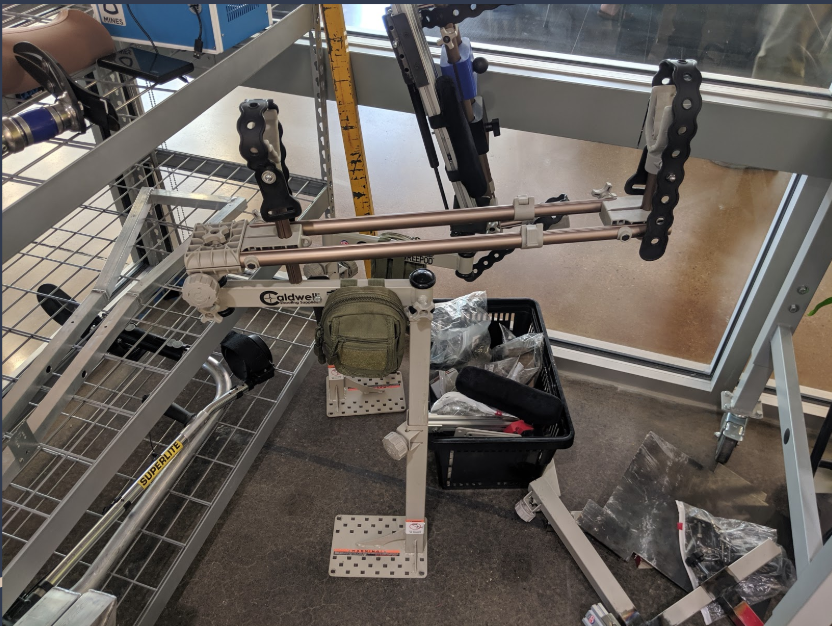
Team Members
- Wills Booth
- Jennifer Broderick
- Ryan Meraux
- Brennon Saucier
- Griffin Stanton
The Client
- Quality of Life Plus
- River Deep Foundation
- Craig Hospital
Acknowledgements
Thank you to Donna B, Bob A, Scott H, Quality of Life Plus, Craig Hospital, and River Deep Foundation. This project could not have been completed without your constant support and help. Also, a huge shout out to the Colorado School of Mines Human Centered Design Studio!
Video
Design Approach
During our design stage, we considered many different options. Some of these concepts included a 180 degree rail mounting system onto the wheelchair, an “anti-aircraft” gun design, and our current design. Ease of use, and cost really drove us to use our current design. We discovered the other designs would not only be hard on the contestant, but on us to create. The current design we are using also was the design that was best suited for this challenge. Our design is based off another product, the Caldwell Deadshot Treepod. We mostly added to this product, and catered it further to our clientele. Most of our analysis that was done, was physical. This minimized the need for FEA analysis and calculations.
To design around the Caldwell Deadshot Treepod, we began with a base system that allows the design to be stand alone along with a system that attaches to track chairs to allow users to use this product in a variety of locations. After having the base design complete, the next step was to modify the Caldwell to support the smooth motion and natural feel that the client was looking to achieve. In order to do this, the pivot point of the system was transitioned into the shoulder area to create a natural feeling motion.
Once this was complete, the shock was added to enable the weight of the gun to be supported by the Caldwell rather than the Challenger. Selecting the shock was difficult because the strength of the shock impacts the fluid motion of the design. If the shock is too strong, the gun will lift up and the challenger will need to force it down whereas if it is too weak the challenger still needs to support the gun to some extent. By finding a shock that suits the weight of the gun, the ease of motion stands out since the gun now moves up and down with little effort.
To allow for a wider range of guns, a ballast system has been implemented to keep the proper balance within the system. The final design that was added to the Caldwell was a system of straps to limit the movement of the device for safety concerns. This incorporates a safety system widening the usability of the device. The improvements made a lot of difference in how well this product worked with the Challengers and how they enjoyed the experience of using the system.
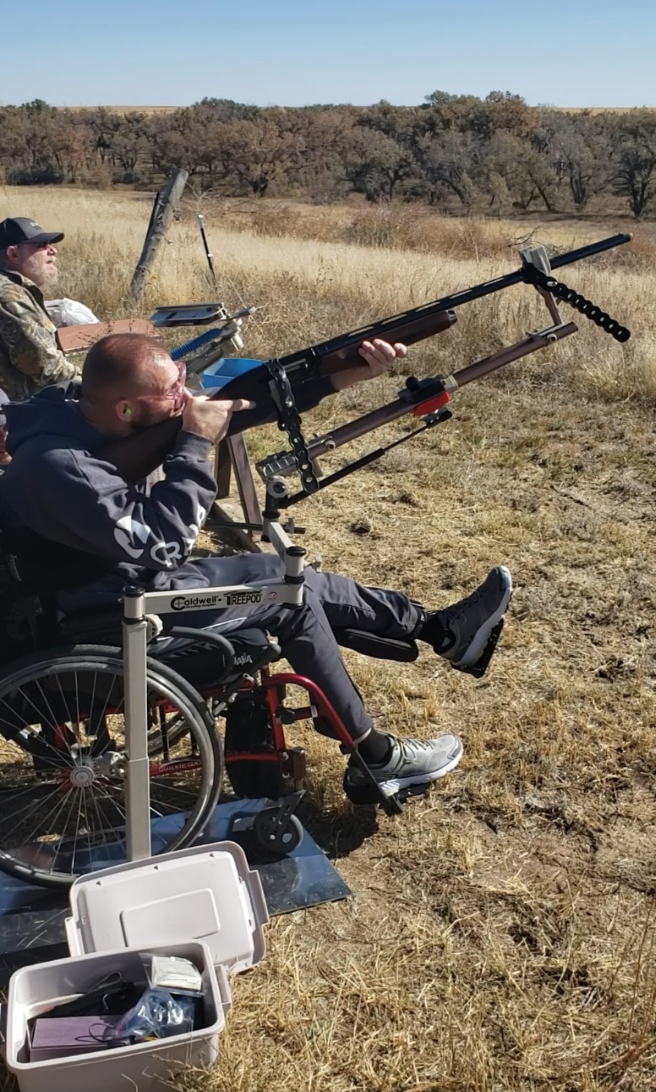
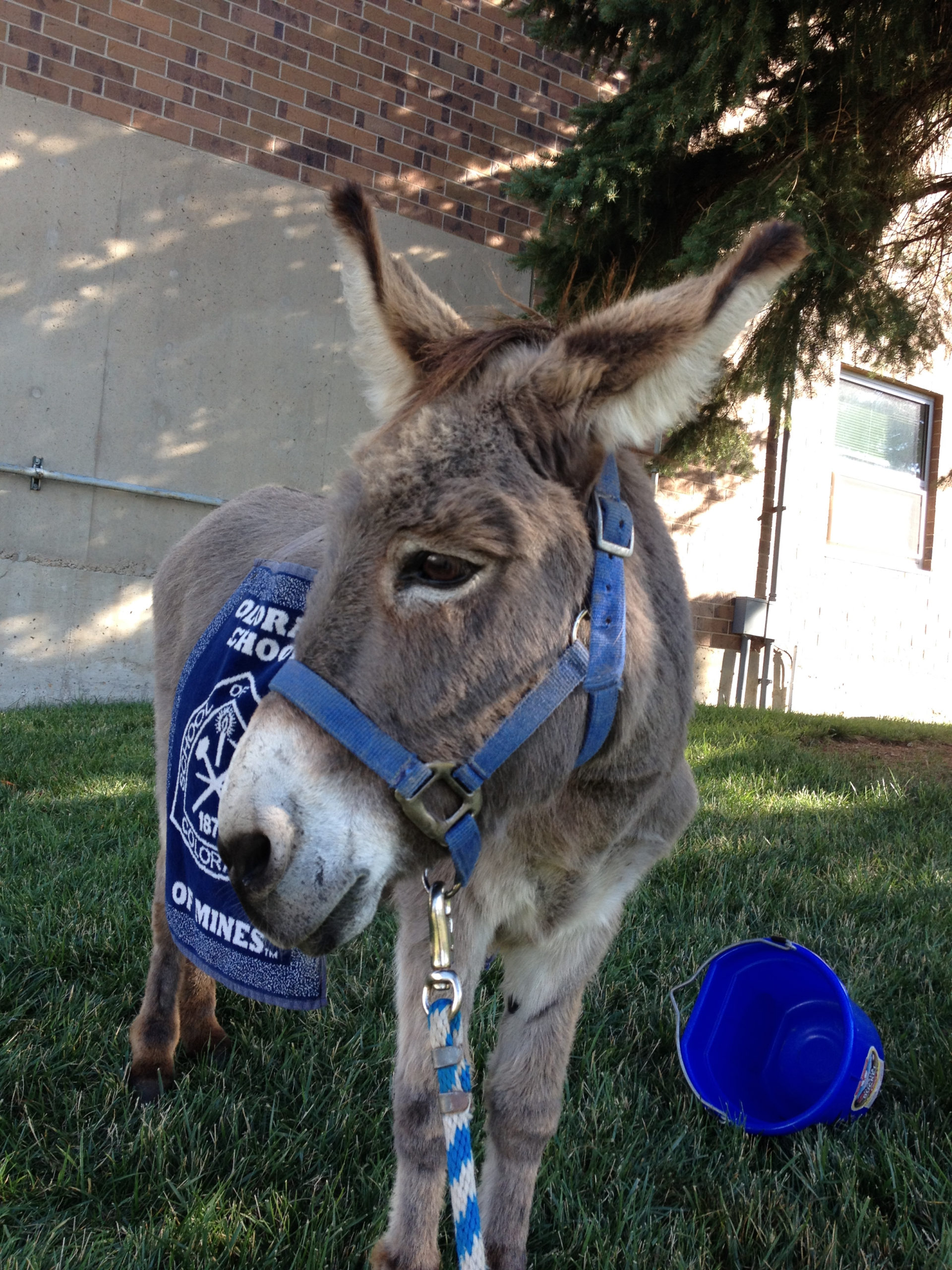
Design Solution
When considering all of the design options, the input for the clients and challengers affected the design enormously. The main contributing factors were the shock system, the up and down motion limiting strap, along with the ballast system to enlarge the scope of gun usability. When it came to the shock system, the challengers quickly realized that the shock worked extremely well with only a couple of guns but not with others. Also, when the Challengers would switch out a lot of adjusting needed to be done in order to make the system work for them. Out of these discussions came a ballast system that was designed to simplify the tunability of the system for gun weight and user preference. Implementing the ballast system quickly improved the design and the usability of the design since each user could change the system to their preferred settings. Another huge safety factor that the clients and challengers realized was the unlimited motion of the design. If someone let the system go the gun could swing and point to any direction. Understanding the danger in this, a series of steps were made to include straps that limit the mobility of the system so that the gun stays aimed away from others when out shooting. Without the help and patience of the clients and challengers, many small design adjustments would have been missed out on and the safety and friendliness of the design would not have reached the same level as the system achieved. Below is a list of parts used in the product.
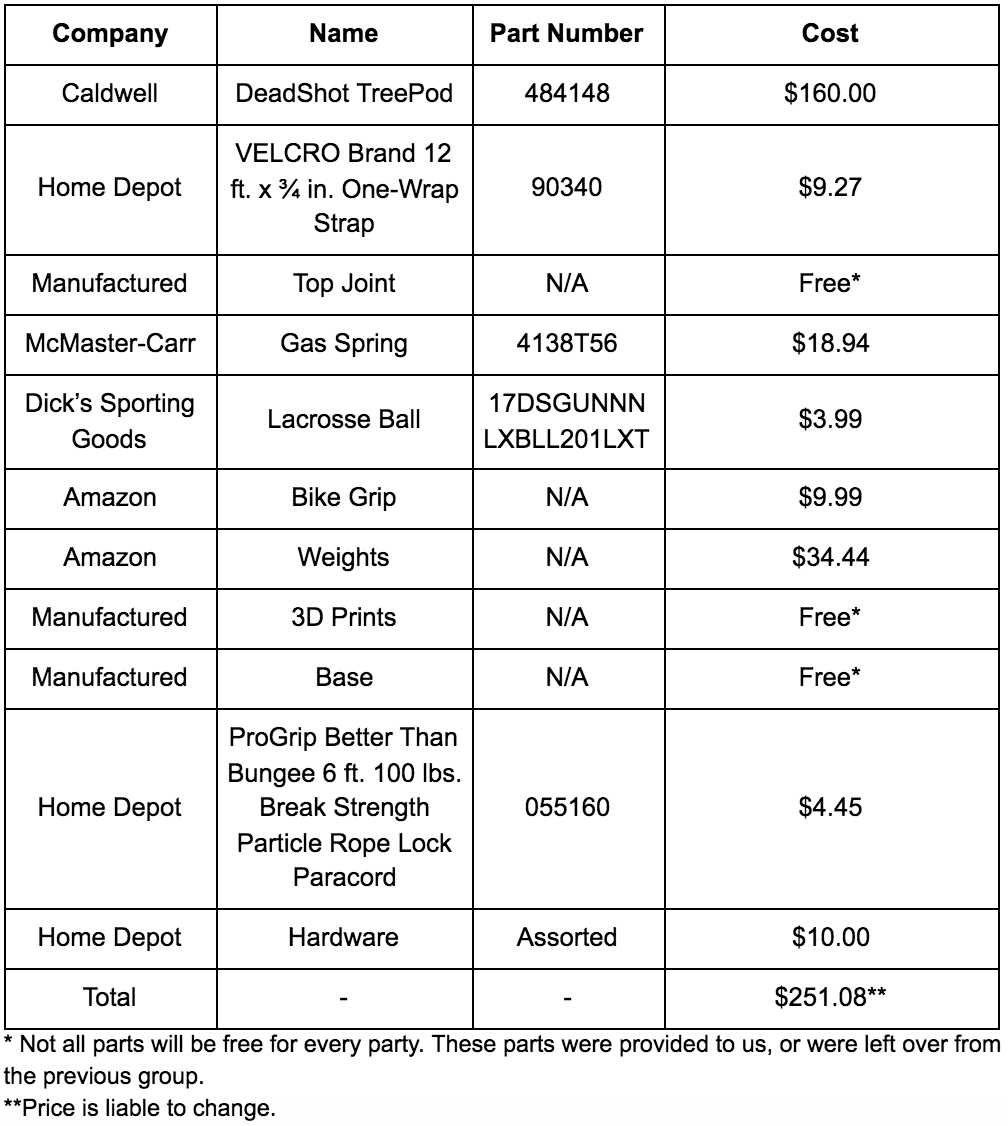
Next Steps
Unfortunately due to Covid-19, we were unable to completely wrap up this project. Going forward, we would recommend the 3D printing be completed, the trigger mechanism be refined, and the mounting mechanism be completed. We believe that our design could be further advanced through a variety of grip options, and possible an overhauled counter weight system.
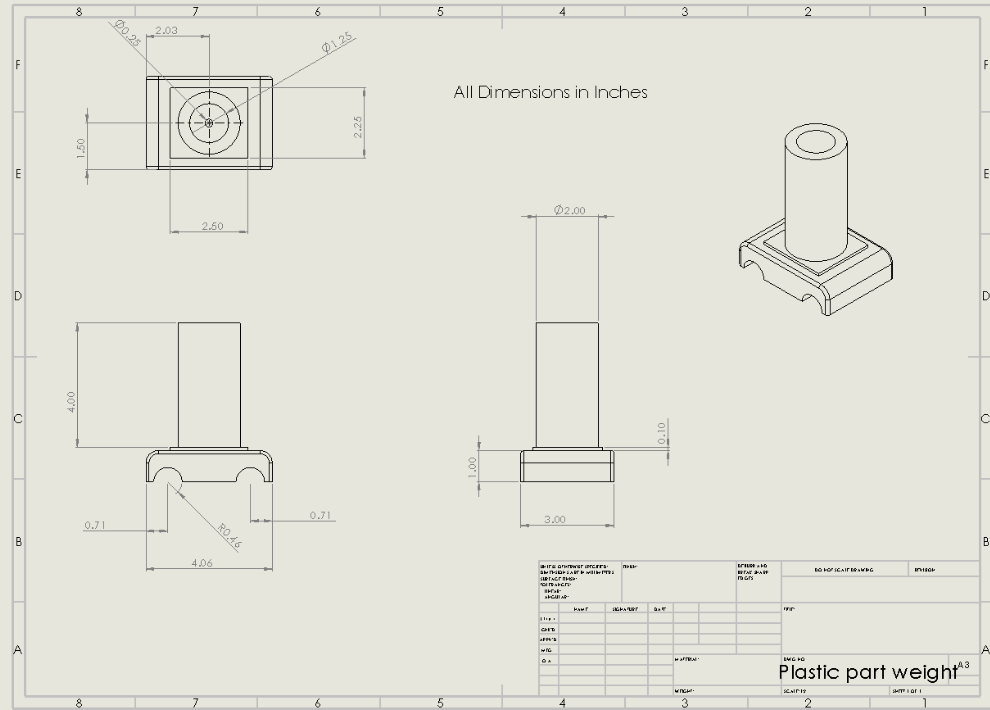
Meet the Team
Brennon Saucier
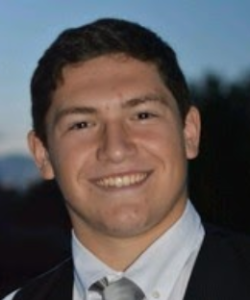
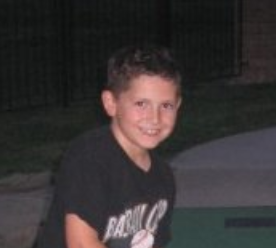
Hello, I am Brennon Saucier. I am studying to become a Mechanical Engineer. I have always been passionate about helping others in whatever way I can. Once I graduate, I will be working for Lockheed Martin on the GPS III project.
Jennifer Broderick
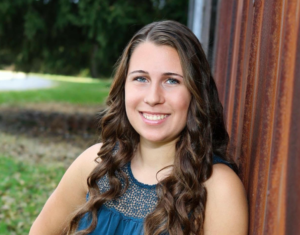
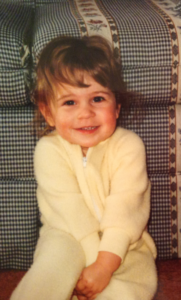
Hello, my name is Jennifer Broderick and I am studying Mechanical Engineering. I have always been passionate about engineering work that helps people and am minoring in Biomechanical Engineering in hopes that I will be able to continue this work. I love that the Human Centered Design Studio has given us the opportunity to work directly with clients in order to apply our engineering skills to better their lives!
Wills Booth
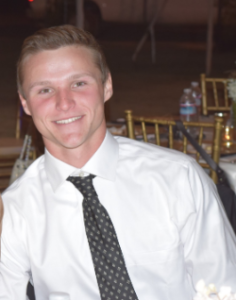
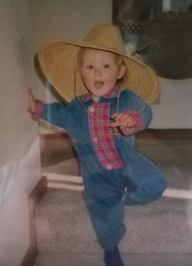
Hello, I am Wills Booth and am currently studying Mechanical engineering . I have always been interested in the automotive field of engineering having grown up racing and working on vehicles. Throughout my time at Mines, I have been on the SAE Formula Racing team and have had the opportunity to improve my abilities and learn a great deal of what it means to be an engineer.
Griffin Stanton
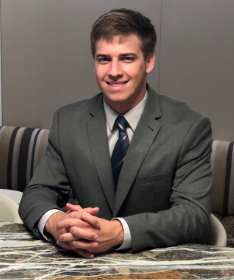
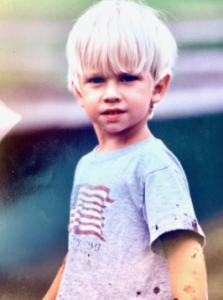
I am studying Mechanical Engineering and plan to graduate in May of 2020. I enjoy hiking, snowboarding, fishing, and spending time with friends and family. Throughout college, I have pursued work in the oil and gas industry and plan to hire on with ExxonMobil fulltime in September of this year. My experience at Mines has taught me to be diligent and hardworking but also to enjoy the down time (few and far between as it may be) to the fullest.
Ryan Meraux
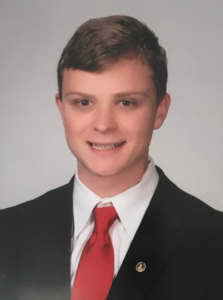
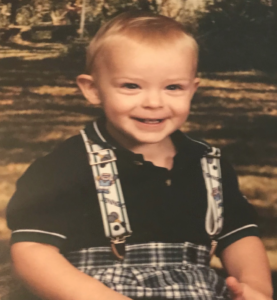
I am a mechanical engineer major from New Orleans, LA. I really enjoy fishing, target shooting, skiing, and being with my family and friends. I hope to one day work in the aerospace industry, but for the time being, I am currently planning on getting a MS in Mechanical Engineering.
